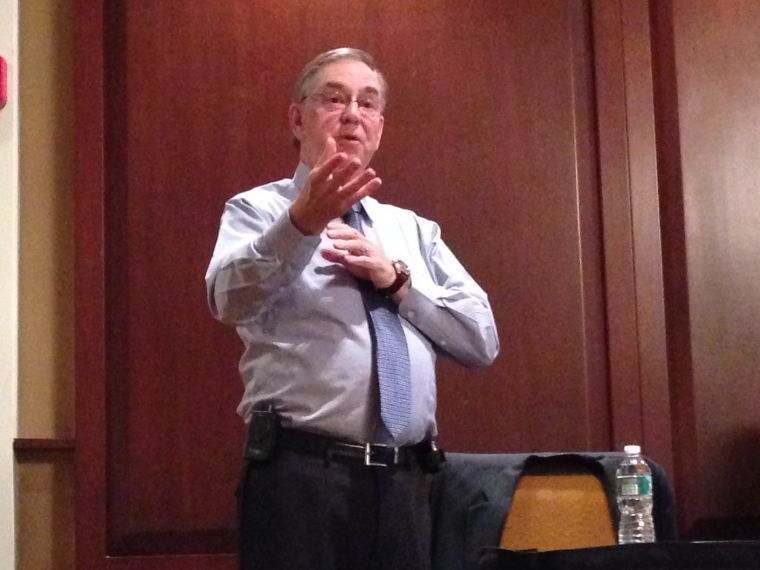The Glenwood Water District is seeking options to ease the burden this summer on its primary supplier, the Roslyn Water District, which faces a potential shortage resulting from the closure of two of its eight wells due to contaminant levels approaching cautionary levels set by the county and state, officials said Wednesday.
Paul Hesse, the chairman of Glenwood’s board of directors, said the district is in talks with the American Water District of Sea Cliff to supply water to a portion of Glenwood Landing and Roslyn Harbor that it serves.
“What we can do then is split off Glenwood Landing and Roslyn [Water District] can supply the Roslyn Harbor end,” he told a group of residents and officials at the Engineers Country Club.
The Glenwood Water District covers Glenwood Landing and Roslyn Harbor with water provided from the Roslyn Water District, which also serves the villages of Roslyn, Roslyn Estates, East Hills and Flower Hill, as well as the unincorporated Greenvale and Albertson and parts of Port Washington.
As a result of the Roslyn Water District’s high demand during the summer and a recent decrease in water pressure, officials have said they are unsure of whether they will be able to supply water to Glenwood during the summer.
Roslyn Harbor Mayor David Mandell said the village would support the Roslyn Water District’s summer rationing plan, which restricts the watering of lawns to between 10 p.m. and midnight.
“We’re talking about restrictions for the summer, but we’re not going to have this all the time,” Mandell said.
Though Hesse said a deal with American has not yet been finalized, but is expected to be reached by the start of summer.
He said the Glenwood Water District is also in support of the Roslyn Water District’s rationing plan.
“Each and every resident, if they do their part, we’re good,” Hess said. “But it’s up to you.”
Officials have said the Roslyn Water District consumes more than 291,700 gallons per hour on an average summer day. The district uses approximately 155,000 gallons per hour on an average day.
The two closed wells, located at Diana’s Trail in the Village of Roslyn Estates and beneath the William Cullen Bryant Viaduct, were found last year to have increasing levels of contaminants, including the chlorofluorocarbon Freon-22. Traces of Freon-22 have also been found at the water district’s well on Mineola Avenue.
Rich Passariello, the Roslyn Water District’s superintendent, said the contamination levels caused the district to accelerate its five-year capital plan, which was planned to begin in 2015.
When the level of Freon-22 at Diana’s Trail reached 4.3 parts per billion during tests of the water in November, officials closed the well.
“When you reach 80 percent of an allowable level, the health department recommends you take the well out of service,” he said.
The plan included an air stripper project to be built at Diana’s Trail and a granulated activated carbon filtration system for the viaduct.
The North Hempstead town council approved a $20.9 million bond for the plan in late February.
“[The Freon-22] only triggered the [five-year plan],” said Michael Kosinski, chairman of the Roslyn Water District’s board of directors. “There were other contaminants those strippers were going to be built for.”
Kosinski said Tetrachloroethylene, a carcinogen, has been discovered at the viaduct.
According to the Environmental Protection Agency’s website, Freon-22 was created by the DuPont chemical company for use in air-conditioning units and to refrigerate heating pumps, but contributes to ozone depletion and global warming. Production of Freon-22 and other chlorofluorocarbons has been phased out in the last decade.
Exposure to Freon-22 can cause dizziness, loss of concentration, depression and/or cardiac arrhythmia if inhaled in high concentrations, and can also cause asphyxiation if inhaled in confined spaces, according to its material data sheets.
Officials from the state Department of Environmental Conservation have said the agency plans to investigate the source of the Freon-22 contamination in Roslyn. Residents have speculated its source is the Morley Park ice skating rink, which was designed and built before Freon-22 began to be phased out of production.



